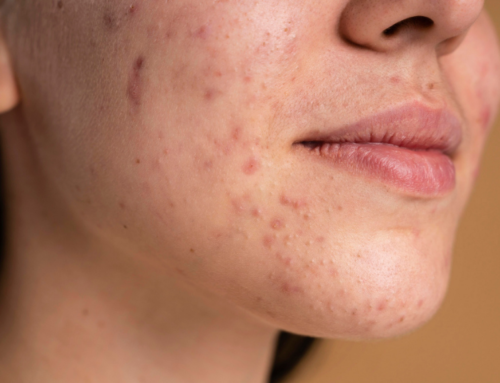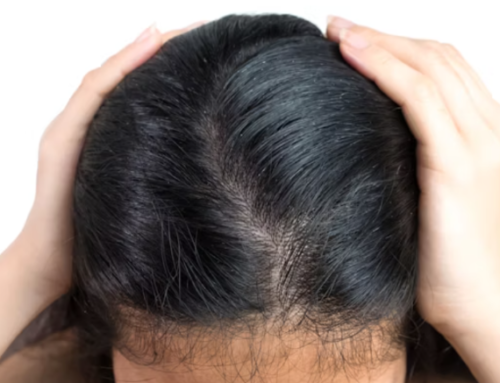Pregnancy is a magical journey for any mother, but it is marked by various changes, both physical and emotional. One aspect that many pregnant mothers experience is the transformation of their skin which is also referred to as pigmentation. Hormones play a vital role in these changes. In this blog, we will discuss the complexities of how these hormones control pigmentation during pregnancy and the common skin conditions that women notice. Hormones are messengers of our body, they are responsible for various physiological processes. During pregnancy, the hormonal levels change significantly throughout the process. Two hormones, estrogen and progesterone, are mainly responsible for these changes. These hormonal fluctuations contribute to the dynamic and often unpredictable skin changes that women encounter.
Melasma – The Mask of Pregnancy
One of the most common phenomena connected to hormonal changes during pregnancy is melasma, often referred to as the “mask of pregnancy.” Melasma causes dark, irregular patches on the face, especially on the forehead, cheeks, and upper lip. This condition arises due to an excessive production of melanin in the body, the pigment responsible for skin color. Estrogen, in combination with sunlight exposure, can activate this pigmentation shift causing dark spots in various parts of the body.
Linea Nigra – The Midline Mark
Another major change in pigmentation is the appearance of Linea Nigra, it is a dark line that runs vertically down the abdomen. This line is caused by to increase in the production of melanin and hormonal shifts. The exact cause behind this is not fully understood yet, but it is believed that hormonal changes, particularly in estrogen, play an important role in the formation of this line.
Chloasma – The Butterfly Effect
Chloasma, even known as the “butterfly mask,” is another sign of hormonal effect on pigmentation. It is similar to melasma but chloasma mainly causes dark spots only on the face. These patches usually resemble the wings of a butterfly, covering the cheeks and the middle part of the nose. As with melasma, estrogen, and increased sun exposure are the main contributors to the growth of chloasma.
The Influence of Sunlight
Hormones are the main actors in the pigmentation, but sunlight plays a vital supporting role in this. Exposure to the sun can worsen pigmentation changes during pregnancy timeline. Pregnant mothers should always use sunscreen with a high SPF to protect their skin from harmful UV rays when they are traveling outside, which can intensify conditions like melasma and chloasma.
Coping Strategies and Skincare During Pregnancy
Understanding the above-mentioned skin changes is the first step, but many pregnant mothers are also looking for ways to manage and adapt to these alterations. Here are some strategies:
Sun Protection: As mentioned earlier, protecting your skin from the sun is the most important step in protecting your skin during pregnancy. Sunscreen with SPF 30 or higher, wide-brimmed hats, and clothing that covers exposed skin can be helpful.
Hydration: Always keep your skin well-hydrated because it is essential to prevent skin from any pigmentation problems. Moisturize regularly to prevent dryness and itchiness of the skin.
Gentle Cleansing: Use mild, fragrance-free soaps or bodywashes to avoid irritating your skin. Harsh chemicals may worsen pigmentation issues.
Consulting a Dermatologist: If you are concerned about significant and continuous changes, consulting a dermatologist would be a wise decision. They can provide personalized advice and recommend safe skincare products during pregnancy.
Postpartum Changes
The hormonal imbalances don’t end immediately with childbirth. Even after giving birth, hormones continue to fluctuate, and your skin may undergo further changes. Some of the pigmentation changes may fade over time, while others may keep continuing through time. It’s essential to be patient and give your body the time it needs to adjust.
Professional Treatment Services – Nurturing Your Skin at the Hospital
Chemical Peels: Chemical peels exfoliate the skin and reduce hyperpigmentation. These peels use different acids to clear the top layer of skin, stimulating the growth of new, evenly pigmented skin in pregnant women.
Topical Prescription Medications: In cases of constant or severe pigmentation, dermatologists prescribe topical medications containing ingredients like hydroquinone or tretinoin. These medications can help lighten dark patches and even out skin tone.
Laser Therapy: Laser treatments, such as intense pulsed light (IPL) therapy or laser resurfacing target areas of hyperpigmentation by breaking down excess melanin in the skin, resulting in a more even complexion.
Consultation and Customized Plans: Professional hospitals such as Dr.Health offer consultations where dermatologists assess the individual needs of the patient. A personalized treatment plan is then developed, taking into account the specific pigmentation concerns, skin type, and medical history.
In the journey of pregnancy, the changes in pigmentation act as a visual reminder of the enormous transformations happening within the mother’s body. Understanding the part of hormones in these changes will allow pregnant mothers to adopt the beauty of this unique experience. While the end glow may come with its share of challenges and hardships, the result is undeniably worth it – a sweet bundle of joy and a newfound appreciation for resilience.
Dr. Pranjal Shamsher is the first Skin Doctor in Bangalore to offer natural, non-surgical and non-invasive treatments for skin disorders. She is a Registered Medical Practitioner (Registration No A-6516) and a true pioneer in Skin-Friendly Treatments.








